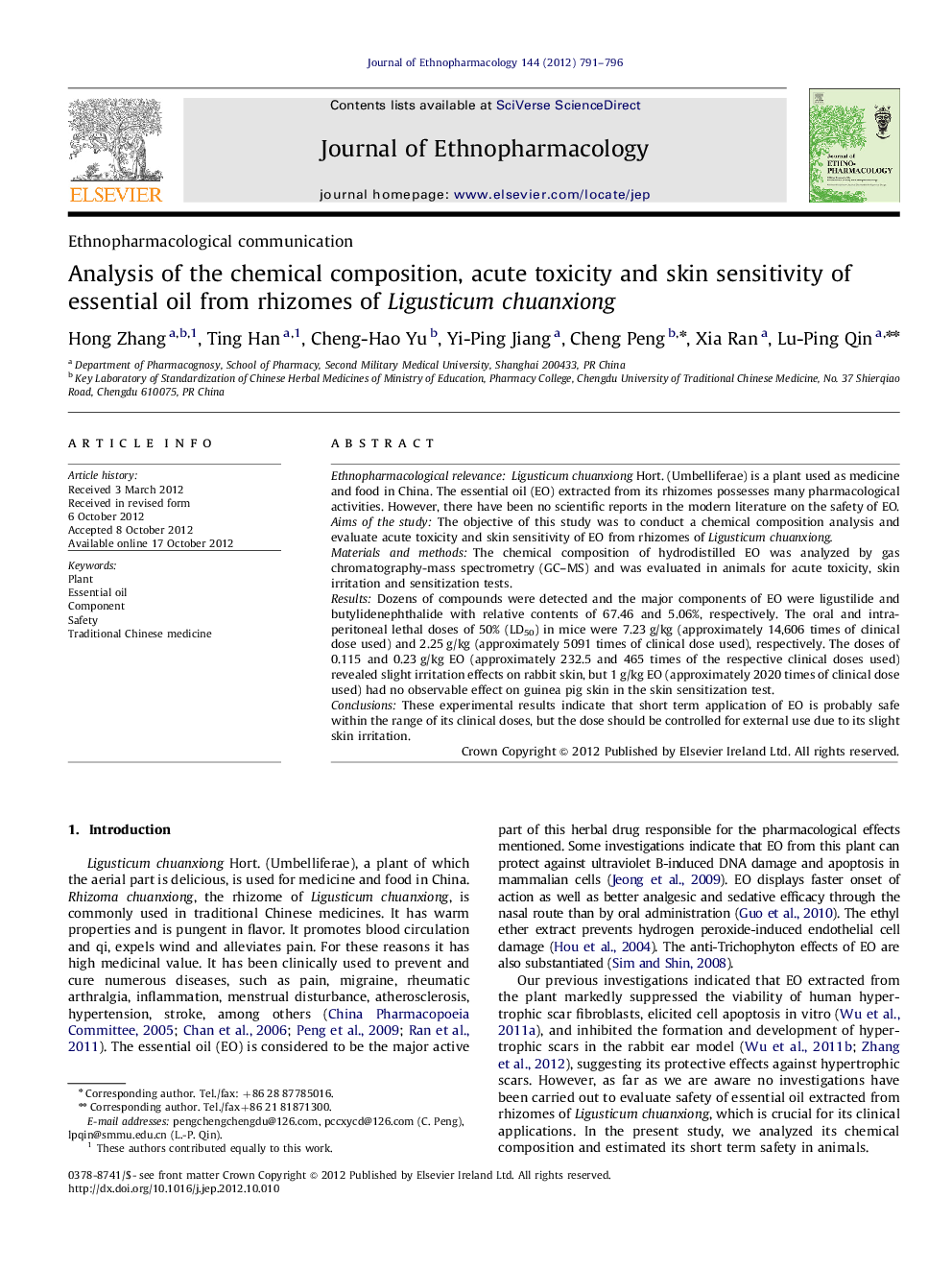| کد مقاله | کد نشریه | سال انتشار | مقاله انگلیسی | نسخه تمام متن |
|---|---|---|---|---|
| 5837936 | 1123973 | 2012 | 6 صفحه PDF | دانلود رایگان |

Ethnopharmacological relevanceLigusticum chuanxiong Hort. (Umbelliferae) is a plant used as medicine and food in China. The essential oil (EO) extracted from its rhizomes possesses many pharmacological activities. However, there have been no scientific reports in the modern literature on the safety of EO.Aims of the studyThe objective of this study was to conduct a chemical composition analysis and evaluate acute toxicity and skin sensitivity of EO from rhizomes of Ligusticum chuanxiong.Materials and methodsThe chemical composition of hydrodistilled EO was analyzed by gas chromatography-mass spectrometry (GC-MS) and was evaluated in animals for acute toxicity, skin irritation and sensitization tests.ResultsDozens of compounds were detected and the major components of EO were ligustilide and butylidenephthalide with relative contents of 67.46 and 5.06%, respectively. The oral and intra-peritoneal lethal doses of 50% (LD50) in mice were 7.23Â g/kg (approximately 14,606 times of clinical dose used) and 2.25Â g/kg (approximately 5091 times of clinical dose used), respectively. The doses of 0.115 and 0.23Â g/kg EO (approximately 232.5 and 465 times of the respective clinical doses used) revealed slight irritation effects on rabbit skin, but 1Â g/kg EO (approximately 2020 times of clinical dose used) had no observable effect on guinea pig skin in the skin sensitization test.ConclusionsThese experimental results indicate that short term application of EO is probably safe within the range of its clinical doses, but the dose should be controlled for external use due to its slight skin irritation.
91
Journal: Journal of Ethnopharmacology - Volume 144, Issue 3, 18 December 2012, Pages 791-796